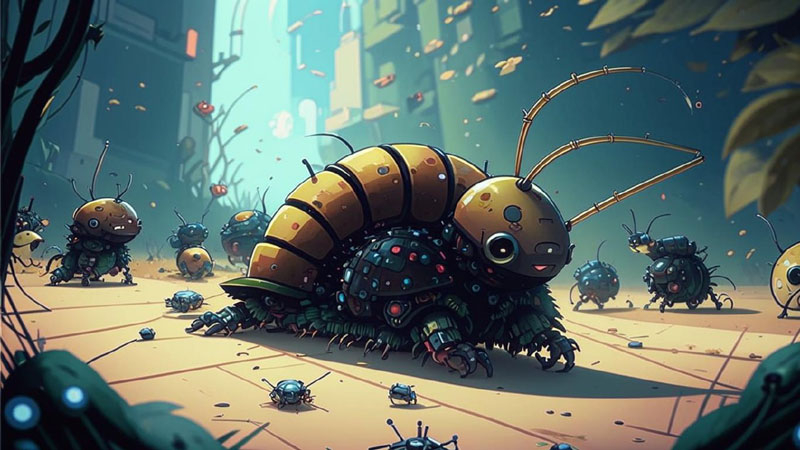Koreans made a swarm of microbots drag a caterpillar by the tail, swim and lift loads


The swarming behavior of microbots is easier to direct to perform a task than to force an individual robot to do the same job. A swarm is mutual assistance and interchangeability to achieve one goal. Swarms of microbots could help in medicine by minimizing surgical interventions, or in agriculture by controlling pests. Scientists from South Korea have studied the ability of microbots to take collective action, implementing process control for the first time.


Image source: AI generation Kandinsky 3.1/3DNews
Scientists made microbots of the same type from epoxy resin – in the shape of dominoes, only 0.6 mm in size each. To control the microbots, grains of the rare earth magnet NdFeB (neodymium-iron-boron) were added to them. There were three types of microbots: with transverse poles, diagonal and longitudinal. Each swarm of identically magnetized microbots consisted of 1000 units. Together they were capable of much.
Under the control of a rotating magnetic field, a swarm of transversely magnetized bots self-organized to overcome obstacles five times wider than the body length of an individual microbot. A swarm of microbots with diagonal magnetization swam willingly and could wrap itself around a pill 2000 times heavier than the swarm itself, and then swim with it, conditionally delivering the medicine to its intended destination.
Image source: Cell 2024
On a solid surface, the swarm was dragging a load 350 times heavier than each individual microbot. Scientists also simulated the cleaning of human blood vessels by a swarm. Finally, under the control of a magnetic field, the swarm dragged a caterpillar across the table, demonstrating the possibility of a targeted effect on “small organisms.” Individual microbots were clearly out of work, but teamwork achieved its goals.
«The high adaptability of microrobot swarms to the environment and the high level of autonomy in controlling the swarm were surprising, says study author Jeong Jae Wie of Hanyang University in Seoul, South Korea. “Although the research results are promising, swarms will need higher levels of autonomy before they are ready for use in the real world.”
Recent Posts
MSI MPG Infinite X3 AI 2nd System Unit Review: All That’s Left to Do Is Play
As part of the expansion of the diversity of the "Laptops and PCs" section, it's…
Curator Deflects Largest DDoS Botnet in History with 4.6 Million Devices
Curator (formerly Qrator Labs) reported successfully neutralizing the largest DDoS botnet ever observed, consisting of…
Gigabyte Introduces AORUS Z890 Tachyon ICE Motherboard Without Conventional DIMM Slots — Only CAMM2
Gigabyte has unveiled the AORUS Z890 Tachyon ICE motherboard at Computex 2025, which features CAMM2…
Trump tariffs will break the internet, analysts fear
The trade war started by Donald Trump, involving almost all countries in the world, threatens…
Google has started filling its AI Mode search with unstoppable ads
Google has begun testing ads in its new AI-powered search feature, AI Mode. Now, when…
SnowRunner creators’ ‘revolutionary’ RoadCraft simulator earns ‘mixed’ reviews on Steam release
As promised, the “revolutionary” construction simulator RoadCraft from Saber Interactive (SnowRunner, Expeditions: A MudRunner Game)…